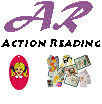- Teach phonemic awareness directly in kindergarten.
-
Students should be taught that spoken words and syllables are made up of sequences of elementary speech sounds. These skills do not develop naturally and must be taught directly and systematically.
- Teach each sound-spelling correspondence explicitly.
-
Students should be explicitly taught the single sound of each letter or letter combination. Each day, there should be five or ten minutes of practicing the sounds of letters in isolation. The balance of the lesson should provide practice in recognizing these letter/sound relationships in decodable text.
- Teach frequent, highly regular sound-spelling relationships systematically.
-
Teach the students the 70 most common sound-spelling relationships. Systematic teaching means students should be taught sound-spellings before being asked to read them, and the order of instruction should progress from easier to more difficult sound-spelling relationships.
- Teach students directly how to sound out words.
-
After students have learned two or three sound-spelling correspondences, begin teaching them how to blend sound/spellings into words. Show students how to move sequentially from left to right through spellings as they "sound out" or say the sound for each spelling. Practice blending words composed of only the sound-spelling relationships the student have learned.
- Teach students sound-spelling relationships using connected, decodable text.
-
Students need extensive practice applying their knowledge of sound-spelling relationships as they are learning them. This integration of phonics and reading can only occur with the use of decodable text composed of words that use sound-spelling correspondences that have been systematically taught.
- Teach reading comprehension using interesting teacher read stories.
-
Comprehension should be taught using teacher read stories that include words most students have not yet learned to read, but which are part of the spoken vocabulary.
- Teach decoding and comprehension skills separately until reading becomes fluent.
-
Both instructional activities should occur, but decoding and comprehension instruction should be taught separately while students are learning to decode. Comprehension skills learned through teachers reading literature can be applied to students' own reading once they become fluent decoders.

